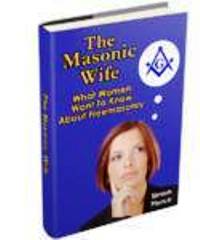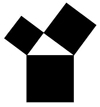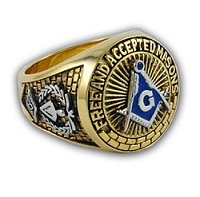Masonic Budget Committee
The Masonic Budget Committee is typically comprised of 5 men.
They are the:
- Worshipful Master
- Secretary
- Treasurer
- Two Master Masons
It is the responsibility of the Masonic Budget Committee to advise the Master of
the funds available to him so that the Master can make informed decisions
throughout his elected year as to the dispensation of lodge funds.
The Budget Committee
cannot perform their task until the Masonic Auditing Committee has audited the
Treasurer’s books and reported their findings to the lodge’s members as
correct.
Simon-Sez:
If
you create an annual budget before the Treasurer's books are audited, you may
have to perform the task a second time!
The Budget Committee prepares a budget of the dues income which will be available
for the operation of the Lodge for the upcoming year.
WHEN:
They will annually review the Worshipful
Master-elect’s budget to ensure the Lodge finances are in order to meet its
obligations.
HOW:
You must first ascertain the beginning balances for all lodge accounts. This
information is available from your lodge Treasurer.
The easiest way to prepare a budget is if your lodge is using QuickBooks or
other accounting software.
Dues Income
STEP 1: If your Lodge Uses an Accounting
Program
Request
of your Treasurer to print an Income detail report for the previous year for all
income received.
STEP 1A: If Lodge Performs Accounting
Manually
If your lodge accounting is not yet automated, ask your
Lodge Treasurer to give you an up-to-date accounting of DUES RECEIVED:
- How many full dues-paying members you currently have.
- How many decreased dues-paying members, (e.g.: Past Masters) you currently have.
- How many endowed (free, non-paying) lifetime members you have.
- How many members have
been sent dues notices, but for which your Treasurer has not received
payment.
Now, multiply the correct dues amounts for
each of the first 3 groups, above.
Example: The example below is based on annual dues for each member as being $
50.00.
Member dues = $ 50.00 per year
| Full dues-paying members | 200 x $ 50.00 | $ 10,000. |
| Decreased dues-paying members | 6 x $ 25.00 | $ 150. |
| Endowed Memberships | 11 x 0 | $ 000. |
| Total Dues Income Received | $ 10,150. |
Simon-Sez:
Many Masonic Budget Committees mistakenly request the total number of members
from their Treasurer or Secretary and multiply that number times the dues amount
for the upcoming year. This is incorrect and may very well create a budget
short-fall resulting in a mad scramble toward the end of the year by the entire
lodge due to this bookkeeping error by the Budget Committee. Don’t let
this be you. As you can see, above, if you had simply multiplied the
total number of lodge members times your dues amount, (e.g)....
(100 members x $ 50.00),
which = $ 5,000.00, you would have a budget shortfall of $ 700.00 to explain to the brethren!
You have now accurately counted your previous year’s DUES income.
Recurring
Fundraiser Income
Recurring Fundraiser income should not be placed in your budget, as it is uncertain as to the amount of funds your fundraisers will be able to raise during the year. Proceeds from fundraisers should be placed as a separate line item under "Fundraiser Funds" or such other description as is appropriate to your lodge. Therefore, only dues income should be placed into your budget.
STEP 2: : If your Lodge Uses an Accounting Program:
Use the detailed Income Report which you requested
of your Lodge Treasurer in Step 1 to give you an up-to-date accounting of
RECURRING FUNDRAISER INCOME RECEIVED.
STEP 2A: If your Lodge Performs
Accounting Manually:
Ask your
Lodge Treasurer to give you an up-to-date accounting of RECURRING FUNDRAISER
INCOME RECEIVED.
Add up the income received from any and all RECURRING fundraiser activities such
as Chili or Soup Night, Pancake Breakfast, Fish Fry, Garage Sale, etc.
Example:
| Chili Night | 100 people x $ 5.00 = | $ 500. |
| Pancake Breakfast | 70 people x $ 5.00 = | $ 350. |
| Fish Fry | 40 people x $ 5.00 = | $ 200. |
| Total Recurring Fundraiser Income | $ 1,050. |
STEP 3: If your Lodge Uses an Accounting Program:
Ask your Lodge Treasurer to print an Expense detail
report for the previous year.
STEP 3A:
The next step the Masonic Budget
Committee must perform is to analyze your previous year’s income to determine
whether current dues income will be greater- than, (>), less-than (-)
or equal-to (=) your previous year’s income.
Example:
Income:
| Total Dues Income Received (from Step 1A) | $ 10,150. | |
| Total Income: | $ 10,150. |
Recurring Expenses are placed into the budget
using the previous year’s numbers, taking into account any new recurring
expenses which must be added to the total.
Expenses may include:
| Rent Paid | $ 3,600. |
| Utilities Paid | $ 1,000. |
| Reimbursements to Members for lodge meals (if applicable | $ 400. |
| Lodge Maintenance | $ 500. |
| Other | $ 500. |
| Total Expenses: | $ 6,000. |
Total Income minus Total Expenses = Total
Budget dollars available to the lodge for the Master’s elected year.
| Total Dues Income | $ 10,150. |
| Total Expenses | $ 6,000. |
| Total Budget Dollars Available | $ 4,150. |
Once the Masonic Budget Committee has
established a correct figure, the committee reports their findings to the lodge
at the next stated meeting.
Don't Forget!
The Masonic Budget Committee cannot perform their task until the Masonic
Auditing Committee has audited the Treasurer’s books and reported their findings to the lodge’s members as correct.
Related Pages:
Return from Masonic Budget Committee to List of Lodge Committees
5 Fast Methods To Find the Information You Want to Learn About
- Search Box - Use the Search Box at the top of your page.
- Site Map - Use my Site Map page to find the topics you are most interested in.
- Carousel - Use the carousel of pages at the top of your screen.
- Menu Icon - On MOBILE, click the MENU button at the top of each page.
- Masonic Books - Browse through a selection of Masonic books.






